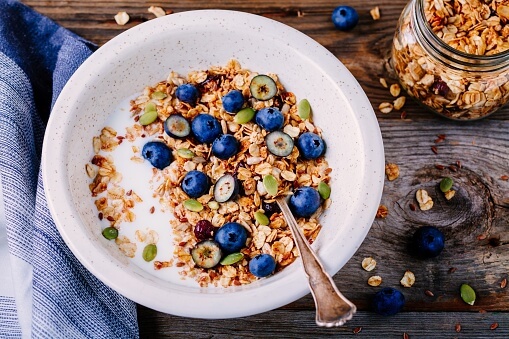A Strong Case for Increasing Your Fiber Intake (Even if You’ve Been Diagnosed with Colorectal Cancer)
8 years ago | Cancer
By Joy Stephenson-Laws, JD, Founder
Colorectal cancer (CRC) is reportedly the third most common cancer and third leading cause of cancer death in the U.S. It was the cancer that took my brother’s life.
So for me, CRC is always on my radar and something I am especially interested to learn more about. And I was quite interested when I came across a recent study, which suggested we may be able to reduce the likelihood of death for those who are diagnosed with CRC.
Several studies have provided some evidence that suggests that people who have an adequate intake of dietary fiber may have a lower risk of developing CRC. And from a preventative standpoint, this is great.
There is, however, not much research about whether fiber intake affects people who already have CRC. But the recent study I referred to earlier, which is published in The Journal of the American Medical Association (JAMA), did some extensive research on this topic.
Researchers tested the hypothesis that high consumption of fiber and its major food sources after CRC diagnosis might be associated with lower mortality.
The study examined 1575 (963 were women) patients with nonmetastatic (cancer that has not spread from the primary site) stage I to stage III CRC. The mean age of people examined in the study was 68.6 years.
Post diagnostic intake data of dietary fiber were repeatedly collected six months after diagnosis and up to four years after diagnosis.
Researchers witnessed 773 patient deaths during the study: 174 were classified as CRC-specific (over a median of eight years of follow-up), 168 of the deaths were attributed to cardiovascular disease and 121 deaths were attributed to other types of cancer besides CRC. The remaining deaths that occurred did not appear to have a specific classification.
“We found that patients with a higher intake of fiber, especially that from cereals, had a lower rate of CRC-specific and all-cause mortality. Patients who increased their intake from their levels before diagnosis experienced a modest reduction in mortality,” according to study notes.
So by how much did the patients need to increase their fiber intake from pre diagnosis?
According to the study, each 5 g/d (grams per day) increase in fiber intake was associated with 18% lower CRC-specific mortality, and the benefit associated with increasing fiber intake achieved its maximum at approximately 24 g/d. No further reduction in mortality was found beyond this level of intake.
“Higher consumption of whole grains was also associated with better survival, and this beneficial association was partly mediated by fiber. Our findings provide novel evidence for the potential benefit of increasing fiber and whole grain consumption among patients with CRC,” the study reported.
“Fiber helps to minimize exposure to intestinal carcinogens by diluting fecal content and decreasing transit time and also has systemic benefits on insulin sensitivity and metabolic regulation, which have been linked to CRC prognosis. Moreover, fiber can be fermented by the gut bacteria into short-chain fatty acids, such as butyrate, acetate, and propionate, that possess a diversity of tumor-suppressive effects.”
Vegetable fiber was associated with lower all-cause mortality but not CRC-specific mortality.
This study also evaluated data from previously published studies, which provided substantial evidence that high fiber intake has a positive effect on those with CRC. Specifically, “a meta-analysis of 25 prospective studies, each 10-g increment in daily intake of total and cereal fiber was associated with an approximately 10% lowered risk of developing CRC. This finding agrees with the well-established data from animal studies that high-fiber diets promote apoptosis and suppress colorectal tumor development. Our present study adds to the existing literature and suggests that the effect of high fiber intake may extend beyond protection against cancer incidence and contribute to better prognosis after cancer is established.”
In general, men need about 38 grams of fiber a day and women need about 25. If you have been diagnosed with CRC, talk to your doctor about your specific dietary fiber needs.
Keep in mind there are two different types of fiber. There is soluble and insoluble fiber. “Soluble fiber may help to lower blood sugar and cholesterol. It's found in oat bran, beans, peas and most fruits. Insoluble fiber is often used to treat or prevent constipation and diverticular disease, which affects the large intestine, or colon. Insoluble fiber is found in wheat bran and some vegetables,” according to the National Institutes for Health (NIH).
For a list of fiber rich foods, click here.
Let’s continue to be proactive about cancer and our health, through both prevention and cure.
Enjoy your healthy life!
The pH professional health care team includes recognized experts from a variety of health care and related disciplines, including physicians, attorneys, nutritionists, nurses and certified fitness instructors. This team also includes the members of the pH Medical Advisory Board, which constantly monitors all pH programs, products and services. To learn more about the pH Medical Advisory Board, click here.







